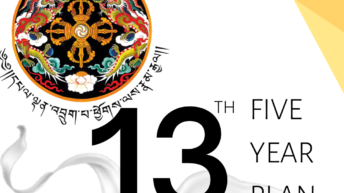|
Listen to article
Getting your Trinity Audio player ready...
|

The Bhoomi Pujan on 05 August 2020, marked the end of a socio-cultural movement which may be designated as the ‘first truly subaltern mass movement of Independent India’. It marked the culmination of a 491-year old struggle that began in 1528. The Ram Janmabhoomi movement has been way above mere politics. It is deeply rooted in the faith of the people and their will to redress the failure to fight back in the past. Shrikanth Krishnamachary has cast the movement as “the cultural awakening of a long-repressed people”; one that will address “deep civilisational wounds”.
The Ram Janmabhoomi movement has been way above mere politics. It is deeply rooted in the faith of the people and their will to redress the failure to fight back in the past.
Ram is the most widely worshipped among the Hindu deities. He is the embodiment of chivalry and virtue. He is the seventh incarnation of Lord Vishnu. In the words of Swami Vivekananda, Lord Ram is the “embodiment of truth, of morality, the ideal son, the ideal husband and above all the ideal king.” He is the symbol of victory of good over evil.
Ram is conceived as a model of reason, right action and desirable qualities, owing to which he was popularly known as ‘Maryada Purushottam’. Our society embarks upon the strong value system that revolves around Lord Ram. Owing to this fact, in a Hindu family, Ramayana is more favoured for recitation apart from other Hindu epics. Family members are urged to be selfless, honest, courageous and to maintain high standards of integrity. Reciting Ramayana was intended to make family members, especially children aware of the importance of imbibing virtues in life. Ram’s popularity has increased profusely by the retelling of the Sanskrit epics in the vernaculars like Ramcharitmanas by Tulsidas, and the Tamil Ramayana by Kamban as well as innumerable oral variants and dance dramas.
In Hindu religion, it is a common practice to greet people by saying “Ram Ram”. This invocation is believed to show the path for attaining enlightenment. It is believed that chanting the words “Ram Ram”, can prevent us from committing the sins and relieve us from the negative effects of the sins. It protects us from the negative energies present in the universe. Such is the influence of Ram in the lives of Hindus. Thus, Ram is not only about “Hindu identity” but also about our “Hindu values”.
The Ram Janmabhoomi movement was a result of the “collective consciousness of the nation” and not any political manifestation. There is enough historical evidence for the fact that Ayodhya is the birthplace of Ram and that there was a temple on the site of the now demolished Babri Masjid. Former ASI Regional Director KK Muhammad also, had confirmed that there was enough archaeological proof of a grand temple whose ruins lie below the Babri Masjid.
Ram is not only about “Hindu identity” but also about our “Hindu values”.
Thousands of Hindus, who wanted the Ram Mandir were moved by love for their deity. Religious-cultural public spaces like Ram Katha mandals, various kirtan mandals and Krishna bhajan mandals etc where people gathered and held discussions on various national and political topics facilitated the Ram Janmabhoomi Movement. That Movement connected with the common masses by reviving the cultural consciousness and memories of Ram, which were circulated and reaffirmed in the public spheres of the country.
PR Ramesh argued that the demolition of Babri Masjid was a ‘resurgence of Hindu India, a resolve to rise above centuries of failure to fight back and assert itself, even signs of an energetic and compelling creativity’. For many, the RamJanmabhoomi’s significance lay not in the claim for the birthplace of the historical King Ram, but in the reclamation of civilisational legacy. The construction of the Ram Mandir is a matter of faith for the Hindus.
Janmabhoomi’s significance lay not in the claim for the birthplace of the historical King Ram, but in the reclamation of civilisational legacy.
The Ram Mandir would be a symbol of national unity and cultural amalgamation. In the words of Prime Minister Narendra Modi, the temple would serve as a “modern symbol of Indian culture”. He termed it as a “historic” moment saying that the Ram Janm Bhoomi has liberated itself from the cycle of “breaking and rising again” that has been going on for centuries. The Ram Mandir would become the symbol of “our eternal faith”, national sentiment and the collective will-power of crores of Hindus. Prime Minister Modi said that “Ram is the basis of our culture. He is embedded in our hearts. In spite of all attempts to wipe out his existence, Ram is still there in our hearts”. Reminiscing on the dream of Mahatma Gandhi of establishing Ram Rajya, Modi said, “Ram is the thread of India’s unity in diversity”. It will be an instrument to unite the “Rashtra” and connect its present with its past. The Ram Mandir in Ayodhya will stand as a reminder that our ancestors have sacrificed many generations for it, entrusting us with the responsibility to live up to it.






The son of Babar have birth at his place so the mohmmden called the babri masque as birth masque. If you think that RAM cannot be the HUMAYUN than read its biography. Ram of ramayan is humayun and Krishna of mahabhart is Babar. If you think it is false you are a fool.I have proof for it. For your kind attention I want to say that find the land of KHANVA where the Hindu army was defeated by so called Babar’s army of 5nations(turkhi, kajakh, chngeji, parsiya and Kandahar) . They are identified in mahabhart as yudhister, bhim, Arjun and nakul sahdev. The mohmmden ideology never call themselves the produce of mother and father so there is no one of its father’s son who helping Rama &Krishna and the rivals are from its father.If you denies the truth I dare you to send proof of existence of ramayan and Mahabharata before 1580